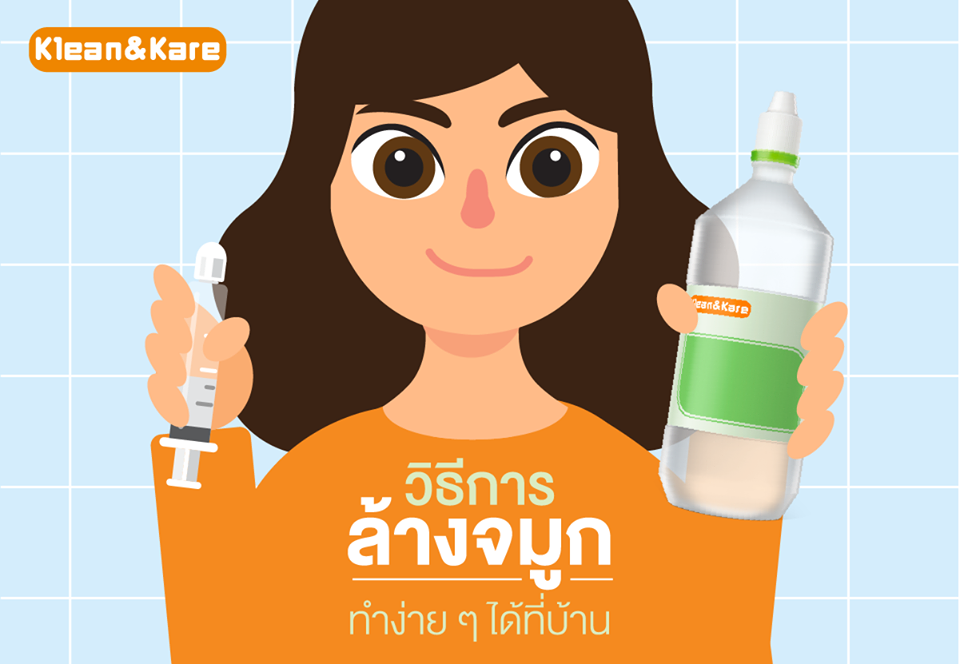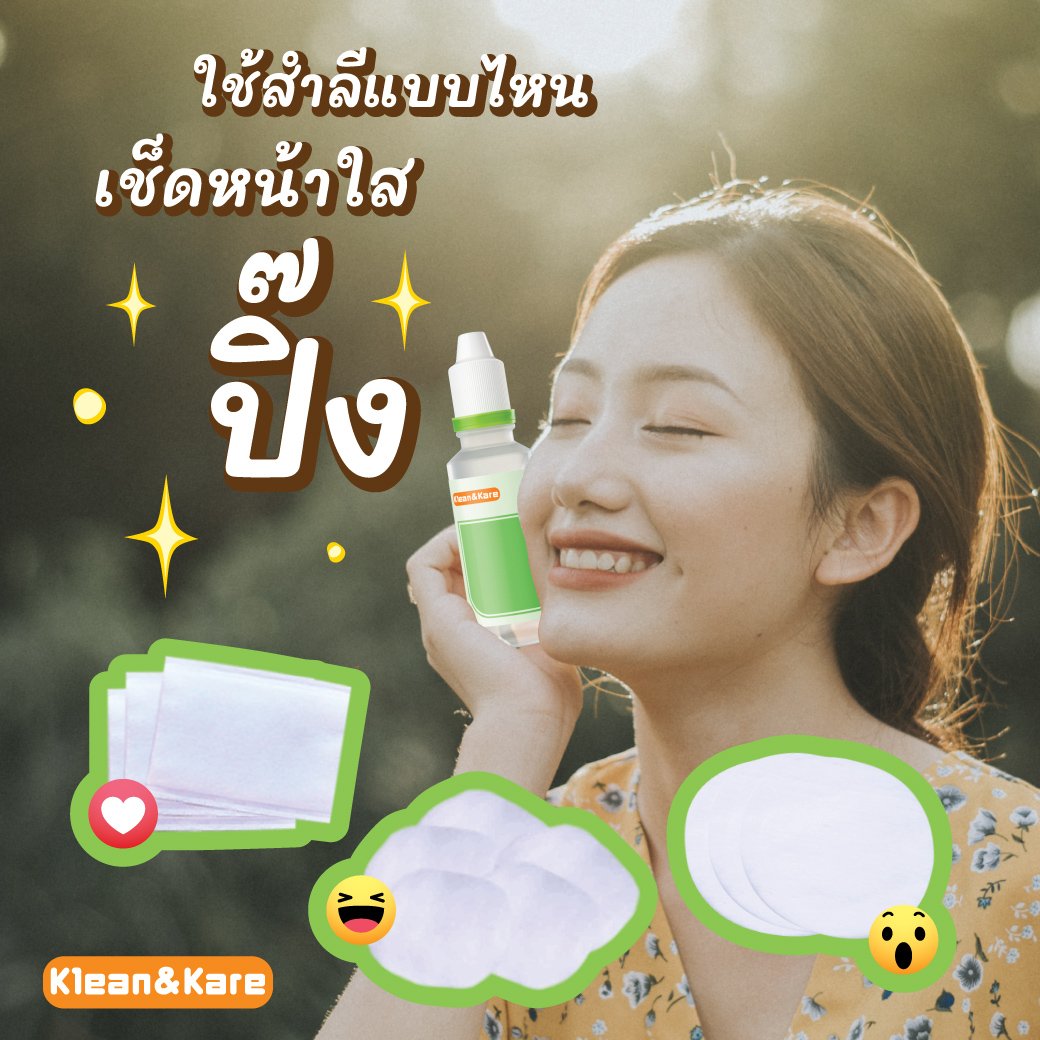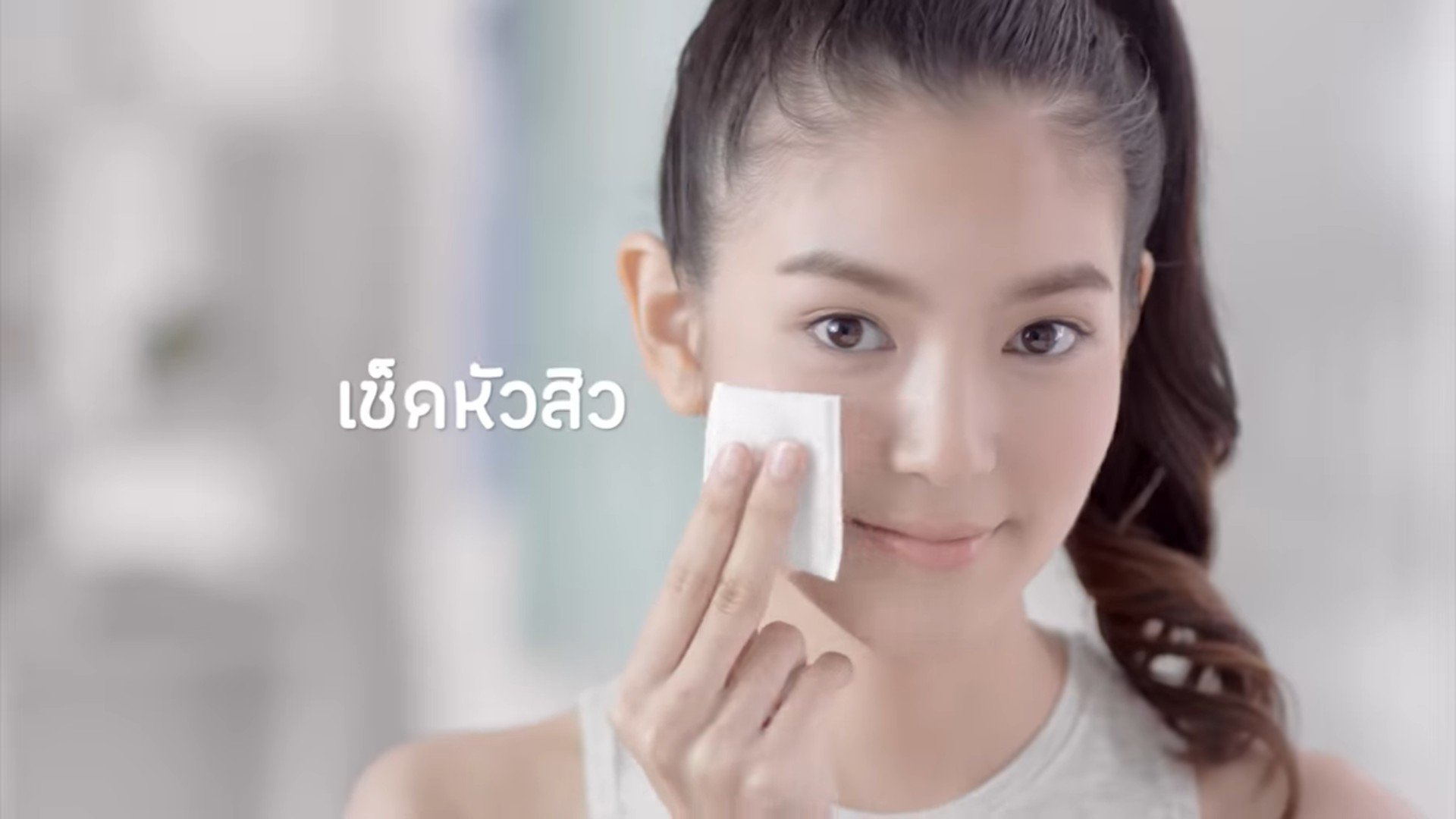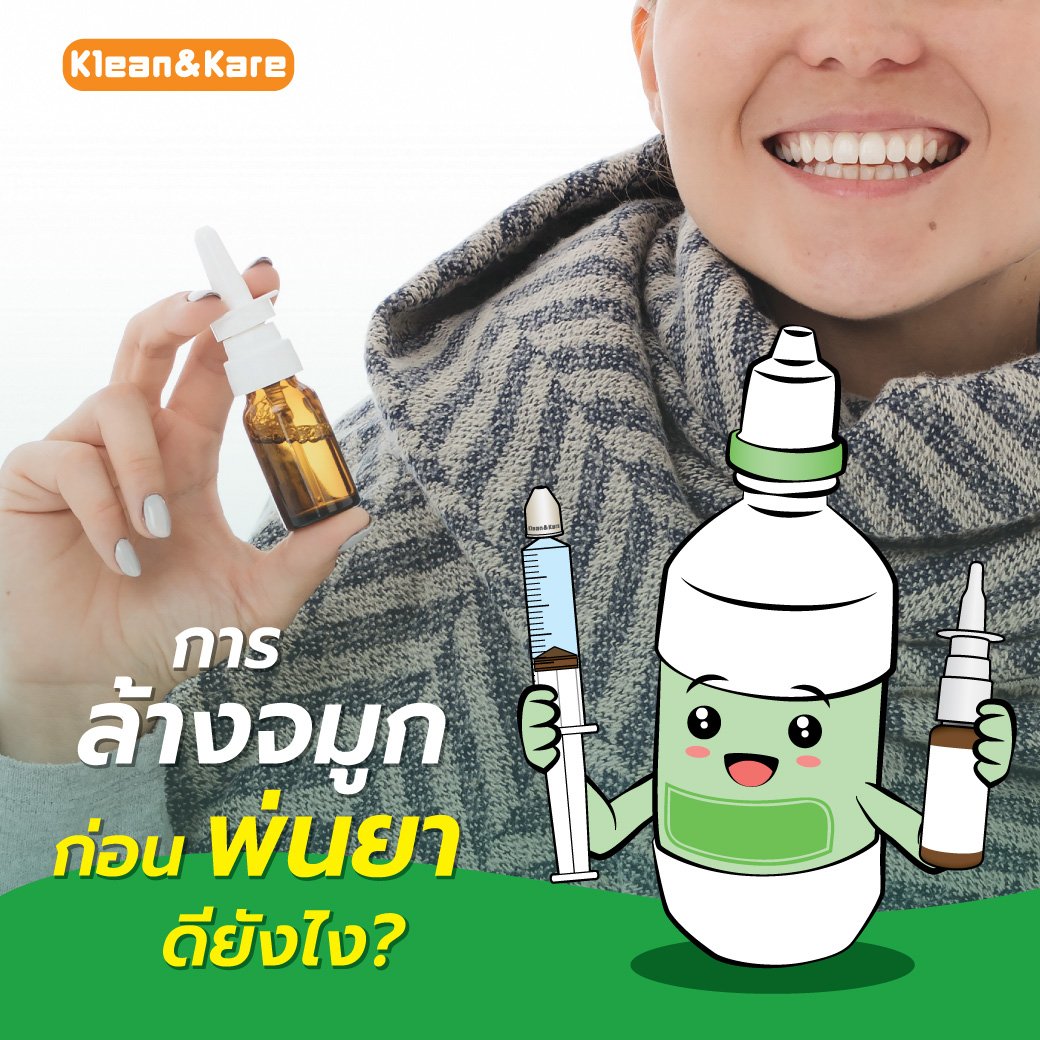Nasal irrigation washes the nasal cavity with saline solution, clearing out excess mucus and allergens while moisturizing the nasal cavity. Nasal irrigation helps reduce post nasal drip, sneezing, and congestion for a better breathing through the nose. The recommended solution for nasal irrigation is normal saline solution (sodium chloride 0.9% w/v).
When to Perform Nasal Irrigation?
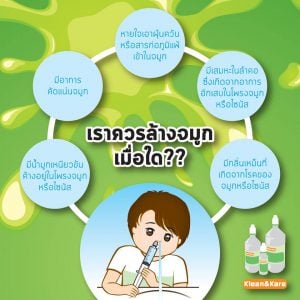
Nasal irrigation can be performed when you have nasal congestion, runny nose, postnasal drip or sneezing, before using nasal spray, or use as directed by a physician. Nasal irrigation is safe and can be performed whenever you feel the need.
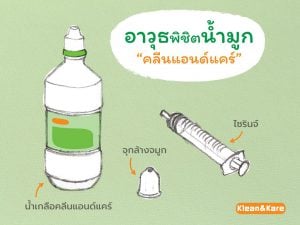
Nasal Irrigation Equipment
- Klean&Kare Normal Saline Solution (Sodium Chloride 0.9% w/v)
- Large-volume luer-slip syringe (5-50 mL) and Klean&Kare Nasal Adaptor
- Other equipment such as clean cup, facial tissue
Instructions
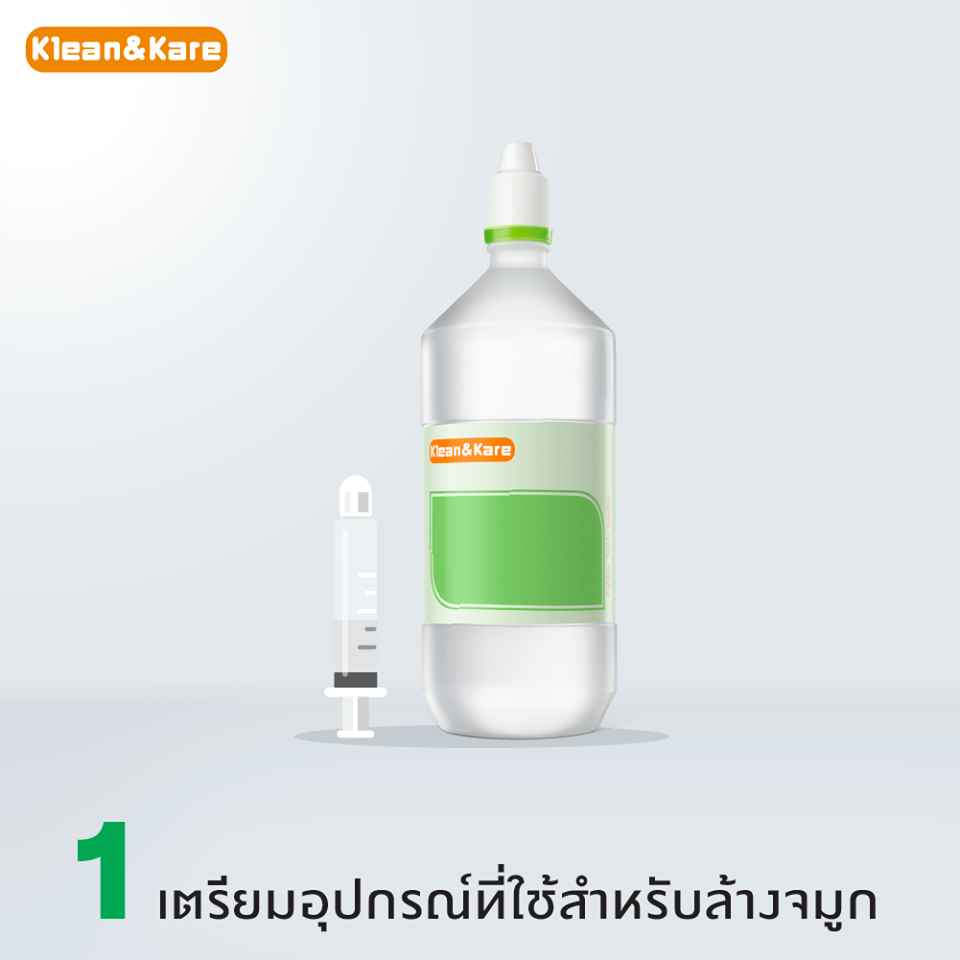
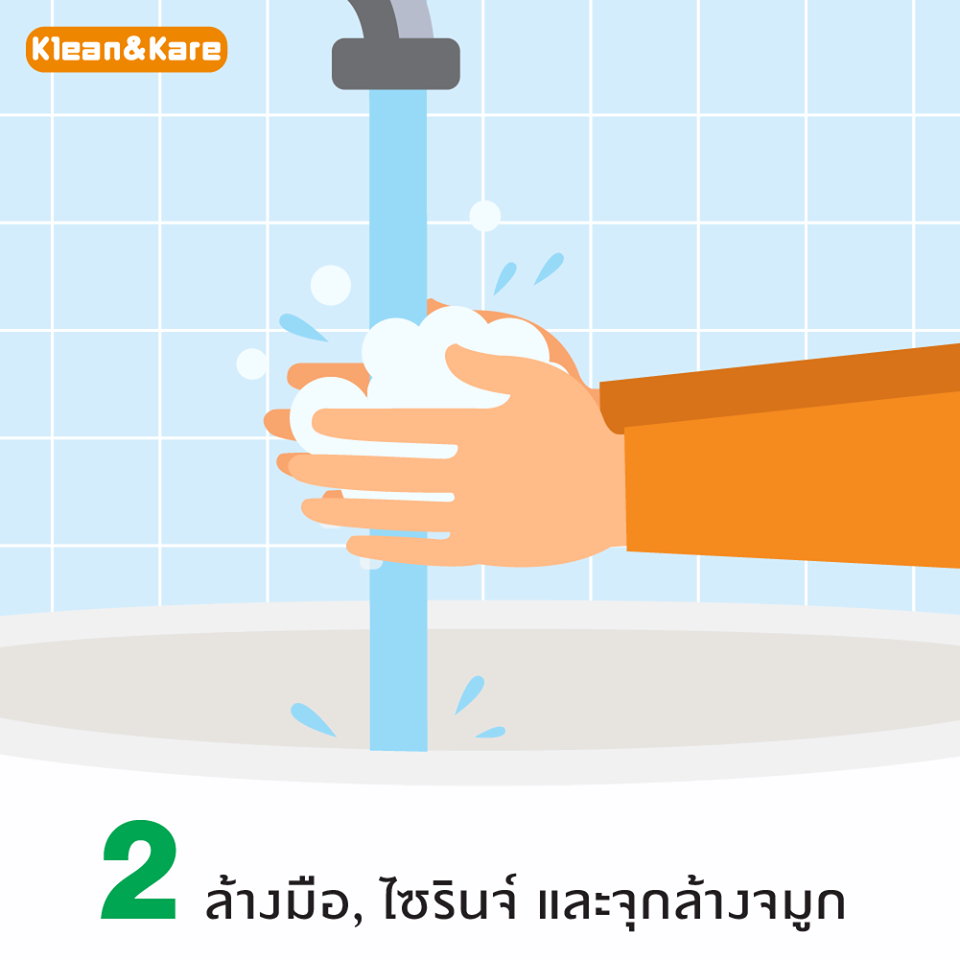
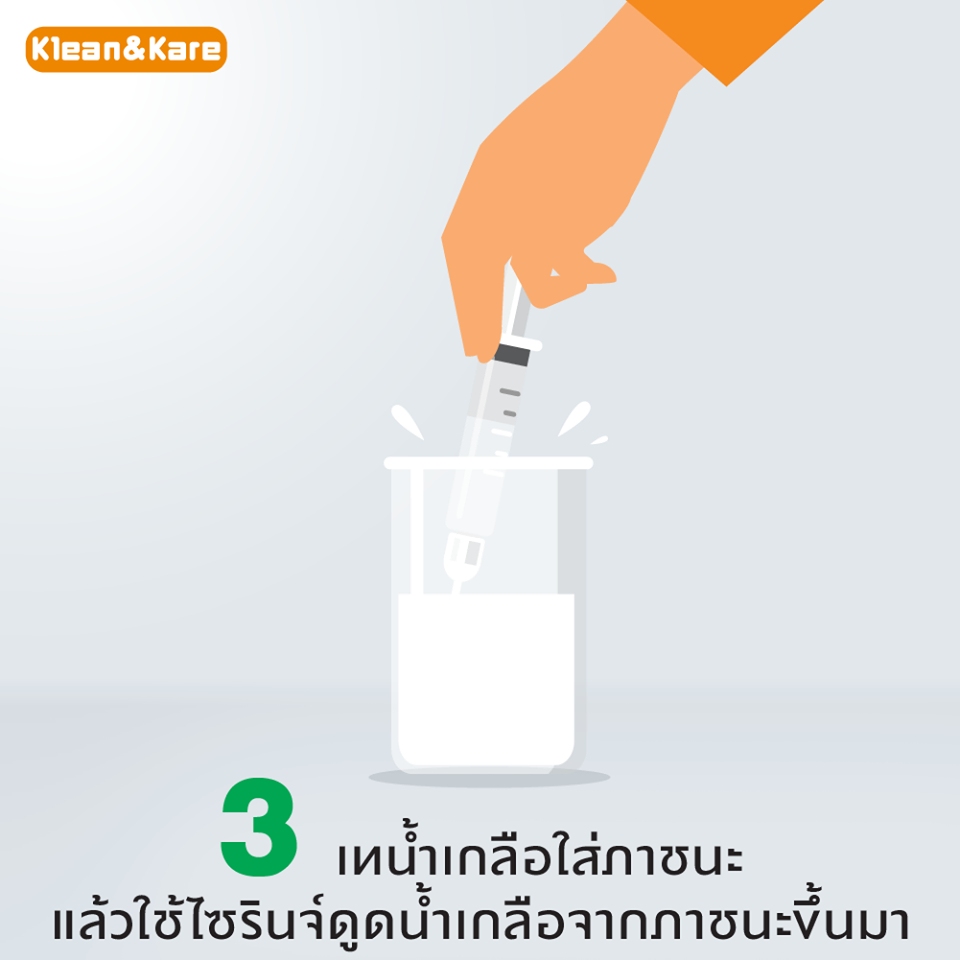
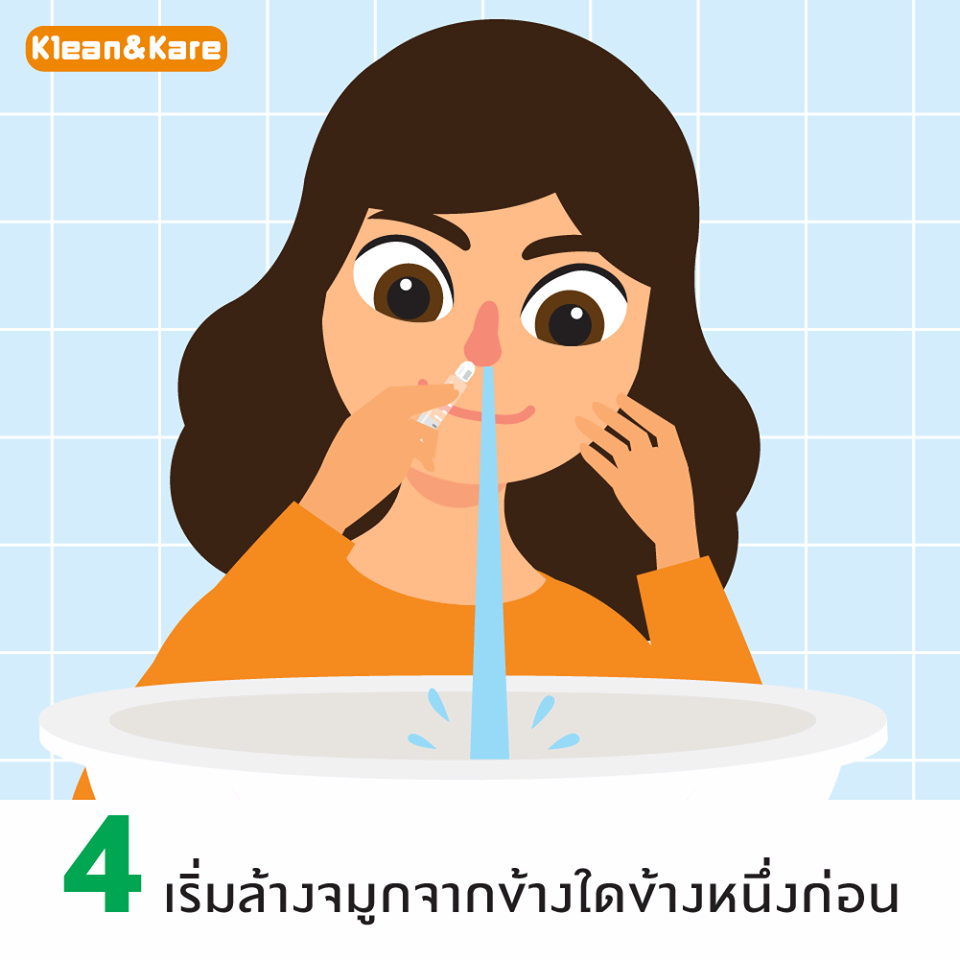
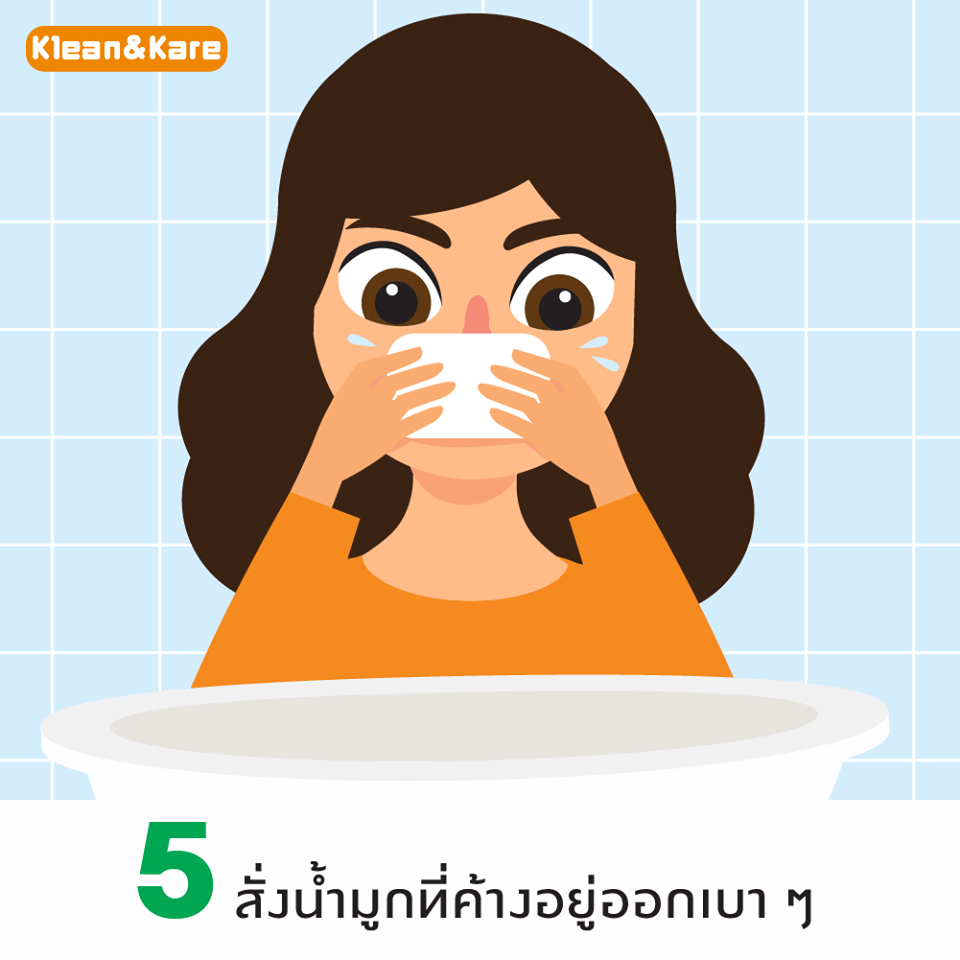
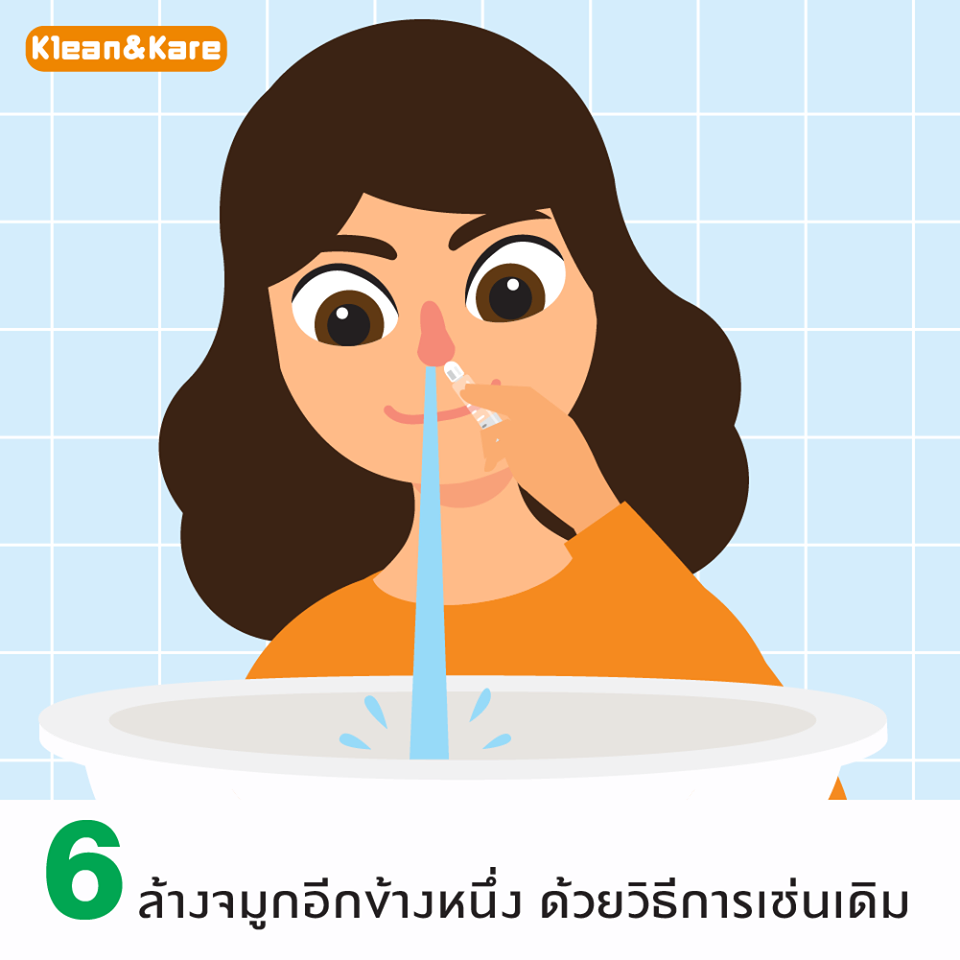
- Prepare equipment for nasal irrigation
- Wash your hands, syringe, and Klean&Kare Nasa Adaptor.
- Fill the syringe with Normal Saline Solution. Attach Klean&Kare Nasal Adaptor to syringe to turn regular syringe into nasal syringe.
- Lean over sink with your head bowed slightly, hold your breath, and keep your mouth slightly open. Insert the tip of syringe into your nostril. Gently push the solution up the nostril. The solution will flow through nasal passages and drain out the opposite nostril into the sink.
- Gently blow your nose. Small amount of solution may drain into the back of your mouth, just spit it out.
- Repeat steps 2-4 with your other nostril. When you are done, you will notice you can breathe much better through the nose.
Precautions for Nasal Irrigation
- Use “Sterile” Normal Saline Solution
Use only sterile normal saline solution (Sodium Chloride 0.9% w/v) for nasal irrigation to prevent bacteria and other microorganisms from entering the nasal cavity, which may lead to serious infection. - Do Not Use “Plain Water”
Plain water is hypotonic to nasal tissue. Washing the nasal cavity with pure water may cause pain and may damage the nasal mucosa. - Gently Irrigate Nasal Passages
To avoid irritation, let normal saline solution gently flow through the nasal passages. Do not squirt or gush the solution. - Blow the Nose Gently
After nasal irrigation, blow your nose gently with both nostrils open. Blowing too hard or with one nostril may create pressure that can cause ear fullness, discomfort, or ear pain. - Using Nasal Spray After Irrigation
After nasal irrigation, wait 3-5 minutes for the nasal cavity to dry before using nasal spray. - Stuffy Nose
If one side of your nose is always blocked, consult a physician before performing nasal irrigation. - Nasal Irrigation in Children
Nasal irrigation is safe to perform in children. Parents performing nasal irrigation to their children for the first time should consult a pediatrician to prevent discomfort and nervousness. Very young children (those who cannot blow their nose or hold their breath) may not tolerate the procedure. Nasal congestion in infants and young children may be relieved by placing a few drops of normal saline solution in each nostril and then immediately suction with bulb syringe.
References
- Kohlstadt I, Ed. “Rhinosinusitis.” Food and nutrients in disease management. Florida: CRC Press, 2009. 32.
- Metson RB, Mardon S. “Nasal irrigation: a key to healthier sinuses.” The Harward Medical School guide to healing your sinuses. New York: McGraw-Hill Professional, 2005. 65-67.
- Baraniuk JN, Shusterman D, Eds. “Clinical approach to diagnosis and treatment of Nonallergic Rhinitis.” Nonallergic Rhinitis. New York: Informa Healthcare USA, Inc., 2007. 346.
- Graham JM, Scadding GK, Bull PD, Eds. “Allergic Rhinitis.” Pediatric ENT. London: Springer, 2007. 304.
- Nordqvist C. “Improper rinsing of sinuses with neti pots can be dangerous, FDA says.” Medical News Today. MediLexicon, Intl., 27 Aug. 2012. http://www.medicalnewstoday.com/articles/249460.php
- Shelov SP, Hannemann RE, Eds. “Ears, nose and throat.” Caring for Your Baby & Young Child: From Birth to Age 5. New York: Oxford University Press, 1997. 536.

